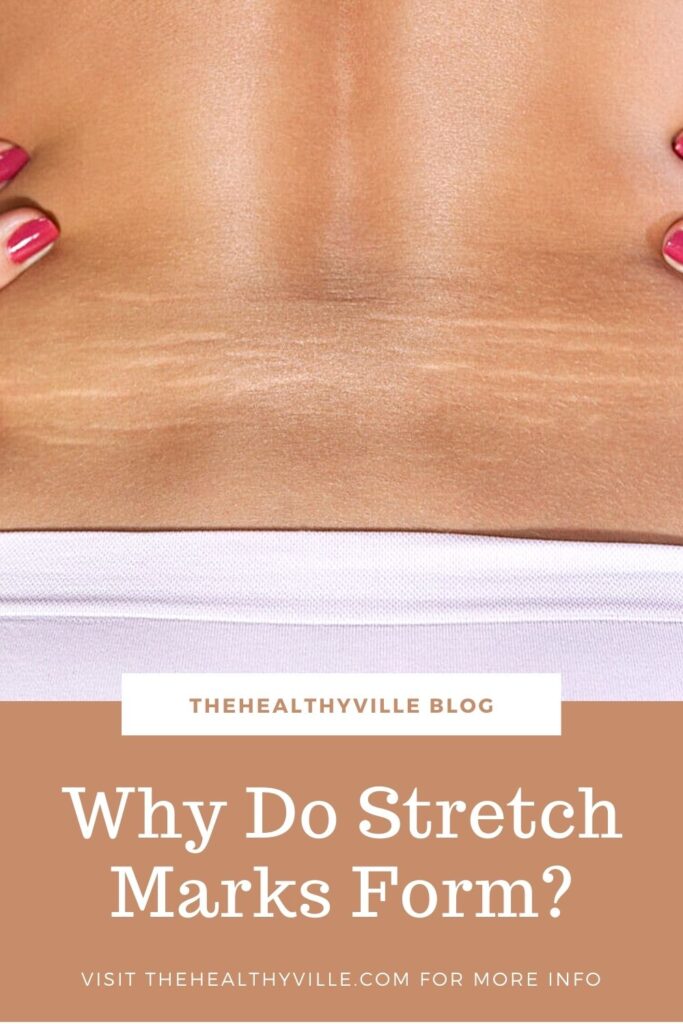Why do stretch marks form? Can you treat them and make them disappear? Learn all about them and see what you can do to get rid of them!
Stretch marks are residual marks on the skin that are generated by the breakage of elastic and collagen fibers. There are different types and here we present them so that you know them in detail.
There are different types of stretch marks and they are not all the same. They are a common medical consultation and are often distressing for people. In fact, they can affect the abdomen, buttocks, thighs, breasts, back, armpits, and groin. They are difficult to treat effectively and their approaches are long.
Stretch marks are more common in women than men and can be more common in certain ethnic groups. They appear more prominent in dark-skinned people. A positive family history is a risk factor for them.
What are they and why do stretch marks form?
These marks are a form of dermal scarring associated with stretching of the dermis. They are often the result of rapid weight change (weight gain and weight loss) or are associated with endogenous or exogenous corticosteroids.
The mechanisms proposed to explain the formation of these lesions are related to hormones, physical stretching and structural alterations of dermal collagen and elastic tissue. In short, it is the collagen substance that is ultimately involved in its appearance.
Types of stretch marks according to color
Based on the color of the different types of stretch marks, we can classify them for study. Thus, we will find two large groups: white and red. Let’s see more in detail.
White
Older stretch marks are usually pearly white or grayish in color, which is why they are also popular as white streaks. They have already completed a healing process, which makes them more difficult to treat and remove.
They are generated by the breakdown of collagen fibers on the skin’s surface. Blood vessels gradually narrow, which hinders the generation of collagen. This is why the results of therapeutic procedures are less noticeable in this type of stretch marks.
Red-purple
These types of stretch marks are those that are active, acutely generated. Its therapeutic management is less difficult and with greater expectations of showing positive results in the short term.
It is at this stage of development that wetting is often recommended consistently and routinely to avoid the consolidated stage, formed by fibrous tissue. Over time, they progress to white stretch marks.
Types of stretch marks according to the cause
On the other hand, beyond color, we can classify the types of stretch marks according to the agent or situation that originated them. The causes are varied and here we tell you the most frequent.
Puberty
During the adolescent period, hormonal changes together with the transformations in the body trigger the appearance of some of them. These processes occur in both men and women.
Growth occurs suddenly and ends up being responsible for the generation of stretch marks. The presence of progesterone and estrogen makes women more predisposed to the breakdown of elastic fibers and collagen.
Marks due to the stretching of the skin
They are visible linear scars that develop in areas of dermal damage as a result of excessive stretching of the skin. They are twice as common in women and appear in the 5 to 50 age group, according to studies from the Indian Dermatology Online Journal.
Clinically, they appear as multiple, symmetrical, well-defined, irregularly linear, red to pale (depending on the stage) atrophic scars that follow the dividing lines. In general, they are parallel to the surface of the skin.
This type of stretch marks are induced by the pubertal spurt that is observed after the thelarche, that is, the moment when a woman’s nipple changes in adolescence. They are present on the thighs, buttocks, and breasts in girls. In children, they often develop over the lumbosacral region and the outer thighs.
Striae gravidarum
These are the characteristics of pregnancy marks on the abdomen, breasts and thighs in the third trimester. The lesions are more common in young women in their first pregnancy and are related to greater weight gain than expected or the formation of a large-for-gestational age baby.
Atrophic
The physiological atrophic striae of adolescence occur in healthy, non-obese individuals around puberty. Also, like other types, they are in association with the growth spurt of adolescence.
They appear as vertical atrophic purplish lines, isolated on the armpits and arms. Their therapeutic approach is not easy and the possibility of eliminating them with galvanism has been evaluated, although the results are not entirely efficient.
They are common
Stretch marks are very common and often cause cosmetic morbidity and psychological distress, particularly in women and certain professions. They carry a high emotional charge, because when they see them, people associate them with feelings that are not pleasant.
Over time, the vast majority of the different types of stretch marks can improve. The ideal time to perform a treatment is once they have stabilized. Many creams that are promoted in the networks for healing have little evidence of their effectiveness, so the recommendation is to make a medical consultation when in doubt.
Don’t forget to SHARE why do stretch marks form with your friends and family on your social networks!

